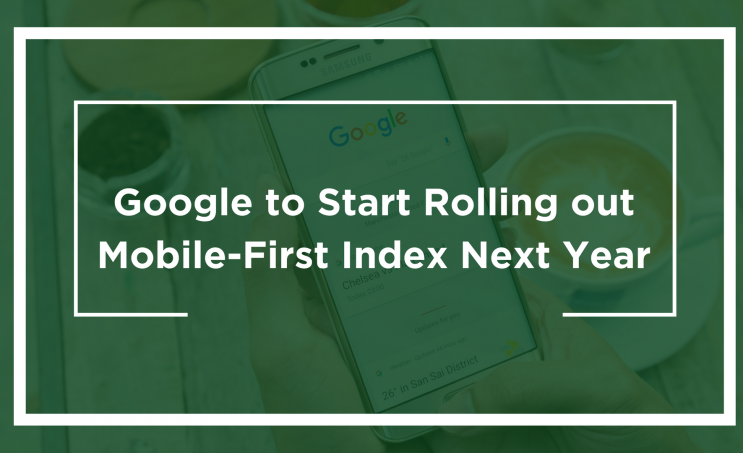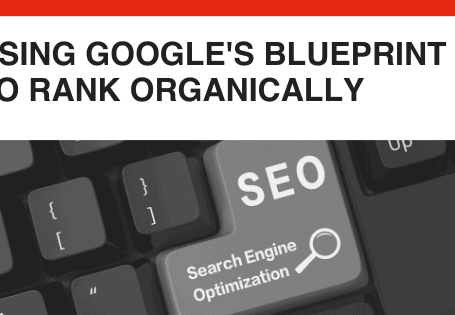Google to Start Rolling out Mobile-First Index Next Year
By: Rank Media

After months of speculation, it looks like the mobile-first index will finally be rolled out sometime over the course of the next year. According to John Mueller in a recent Google hangout, it seems like Google will start rolling out the mobile-first index to websites that have already prepped for the update.
While the official date of the rollout is still shrouded in mystery, Mueller stated that webmasters would not be notified of when the update happens. From a tracking perspective, this will make it rather difficult for webmasters and digital marketing analysts alike to pinpoint a specific date as to when the change occurred.
However, the ambiguity will be useful in keeping webmasters on their toes to make sure that they are putting all efforts into optimizing their websites for mobile devices. However, this presents an advantage for sites that are already optimized for mobile devices, as they will be given priority to realize the benefits of a mobile-first index ahead of websites that are not up to code.
What are the advantages of a mobile-first index?
The switch to a mobile-first index will showcase mobile-friendly results for users, decreasing the chances of clicking on sites that are not optimized for mobile devices. Unlike a single index, which assigns rankings factors based on how the website renders on desktop devices, the mobile-first index will crawl content on the mobile version to assess the relevance to specific search queries. At the moment, all organic results are based on how search engines view the content on desktop devices. With regards to mobile rankings on Google, certain adjustments are made (negative or positive) depending on the number of mobile-friendly aspects built into web pages.
While this doesn’t seem problematic at first glance, it does present some issues from the vantage point of the end user. For example, websites with separate desktop and mobile versions may have radically different content when comparing the two versions side-by-side. This scenario above typically arises when webmasters create an “m-dot” version of a website, which strips of a lot of features and content to make it “easier” for users to navigate. For mobile users, this is problematic because they may see a snippet of content based on the desktop version, but once visiting the mobile site, they will realize that it doesn’t resemble what the preview indicated in the search engine result snippet. The disconnect between mobile and desktop results in a disappointing search engine experience, which Google is trying to curb.
What kind of websites will be affected by the mobile-first index?
Basket #1: Responsive Websites
If your site is not mobile-friendly, the chances are that you will see very little change. The desktop and mobile Googlebots will crawl the same type of content, resulting in the same snippets on search engines. However, if you still don’t have a mobile-friendly website, it’s time to consider updating it so that you can give your campaigns a fighting chance when it comes to conversion rate optimization. But that’s another discussion.
Basket #2: Non-Mobile Friendly Websites
If your site is not mobile-friendly, the chances are that you will see very little change. The desktop and mobile Googlebots will crawl the same type of content, resulting in the same snippets on search engines. However, if you still don’t have a mobile-friendly website, it’s time to consider updating it so that you can give your campaigns a fighting chance when it comes to conversion rate optimization. But that’s another discussion.
Basket #3: Separate Websites for Desktop and Mobile
If you have separate websites for mobile and desktop devices, this is where you need to pay attention. If you have created a mobile website to simplify things for users, you will most likely see a significant decrease in rankings once the mobile-first index comes out. The inherent issue of an m.dot website is that it eliminates most of the content or removes it entirely. At the moment, these sites are leaning on the desktop version to maintain rankings. However, a mobile-first index will prove to be problematic, as Google will not be considering the content on the desktop versions when assessing the rankings for the mobile website, as indexes will be managed separately.
How to prepare for the mobile-first index
While the mobile-first index won’t be implemented until 2018, you still need to prepare for the upcoming update. If you fall into either basket #1 or #2 referenced above, very little will change. However, if you do fall into basket #2, you should consider updating your website anyways because we’re living in a mobile-first era where users don’t want to waste their time on sites that aren’t mobile-friendly.
Now, if you’re in basket #3, you have two options to consider:
- Migrate to a one-website system that is mobile-friendly and responsive.
- Ensure your content on the mobile site matches the content on the desktop site. Maintaining consistency between two different websites may be trickier, especially if you’re using pre-made themes and third-party apps to manage mobile content.
Search engine optimization has never been an easy task. When it comes to your website architecture, taking shortcuts won’t help you in the long run. If you want to realize the potential of strategic SEO, it’s time to start developing a responsive website, which will also help you when it comes to generating conversions from all types of digital marketing campaigns.







 (800) 915 7990
(800) 915 7990
